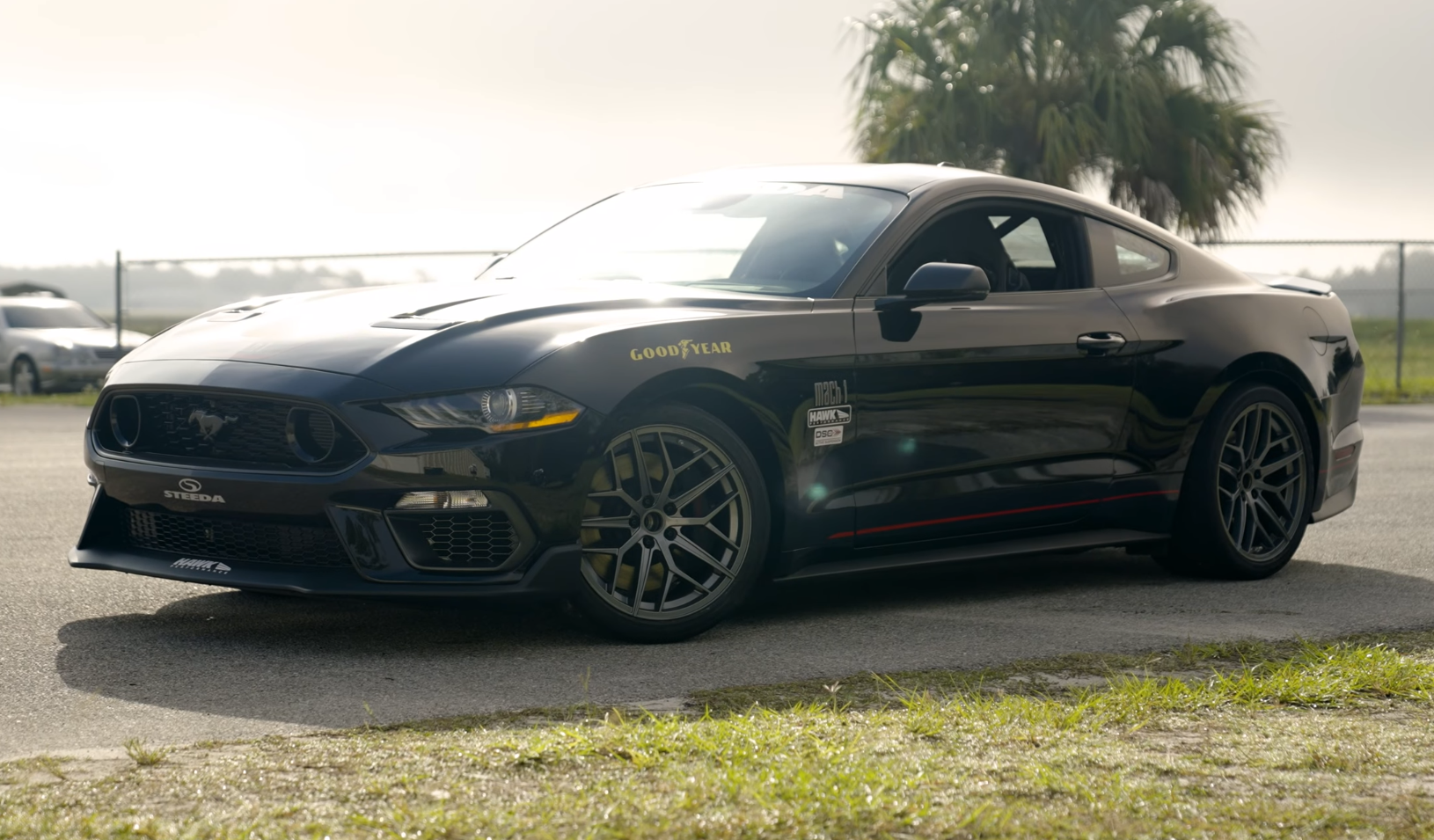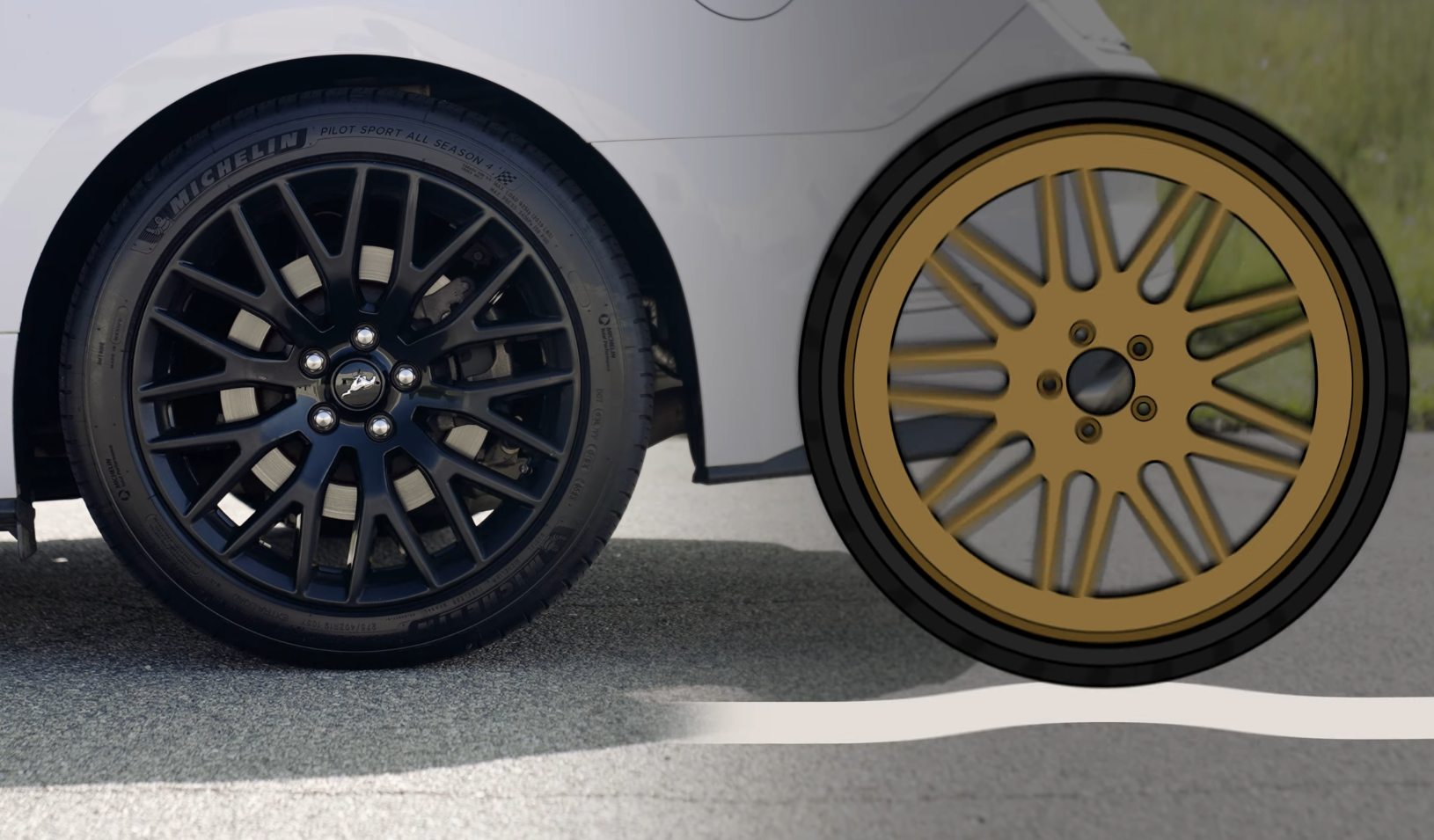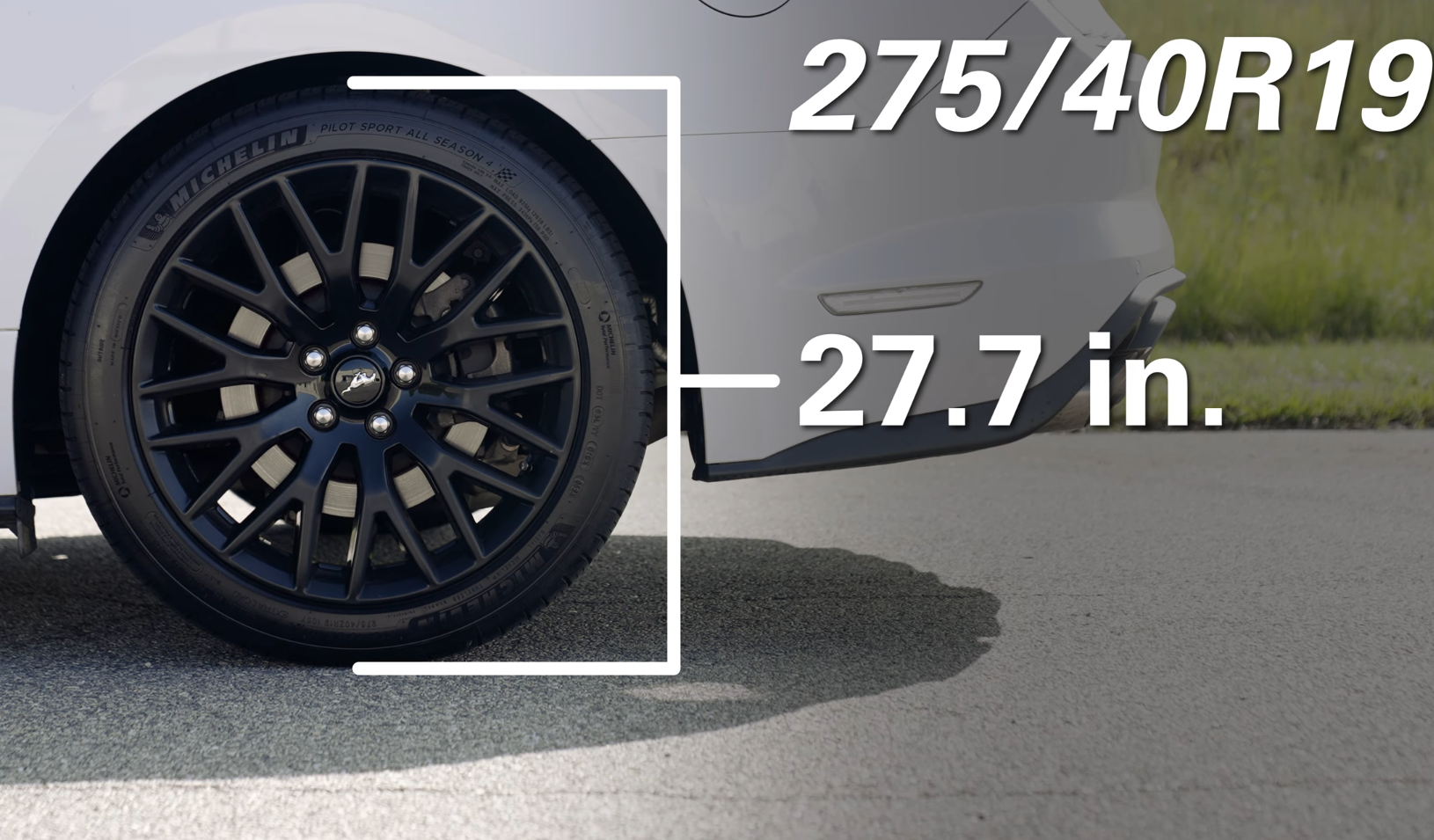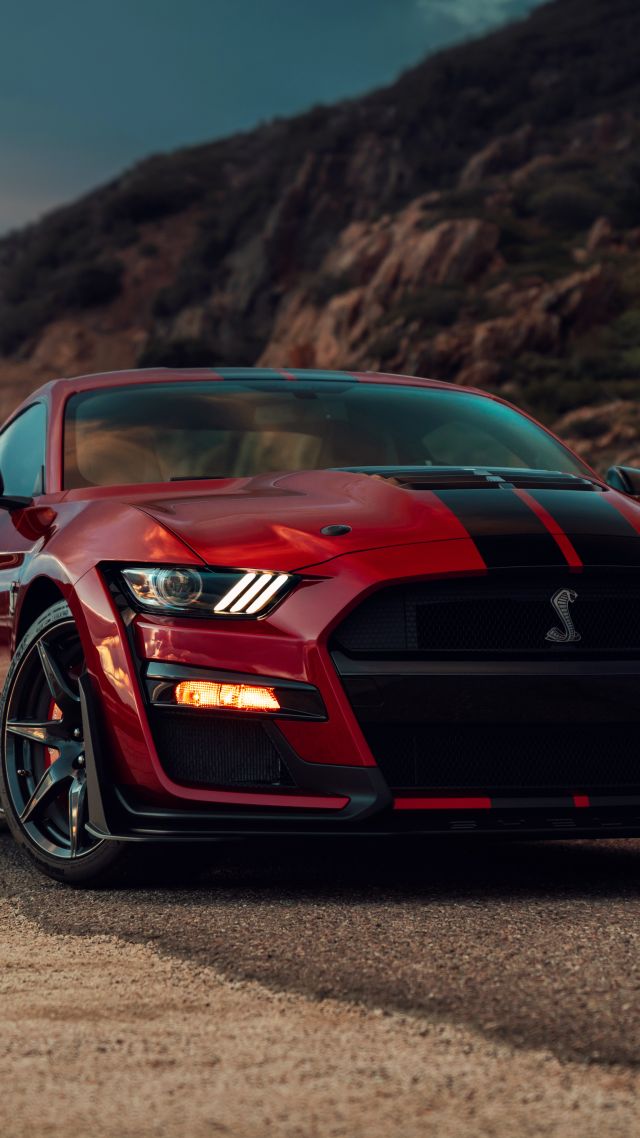Many Mustang owners think about changing their wheels to fit their driving style or needs. Wheel size can make a big difference in how a Mustang looks and performs, especially for street driving, racing on tracks, or drag racing. Each type of driving has a wheel size that works best, whether it’s for looks, comfort, or getting the most out of the car.
Different sizes like 18-inch, 19-inch, or 20-inch wheels each have their own uses and benefits. The right choice depends on things such as ride quality, tire grip, brake size, and the way a driver wants the car to handle. Knowing what each size offers helps owners pick a setup that matches how and where they drive.
Key Takeaways
- Mustang wheel size affects both style and performance.
- Different driving situations require different wheel types.
- Careful selection ensures better handling and the right look.
Picking the Best Wheels for Your Mustang
Stock Wheel Sizes and Options
Mustangs from the S550 generation usually come with wheels that are 18, 19, or 20 inches in diameter. Most drivers who keep their cars on the street pick a 20-inch wheel. This size fills the wheel well and gives a sharp, modern style. The downside to bigger wheels is a thinner tire sidewall, which can make the ride feel a bit stiffer.
Below is a table of popular stock and common upgrade sizes:
| Wheel Location | Popular Stock Sizes | Common Street Upgrades |
|---|---|---|
| Front | 18×8, 19×9 | 20×10 with 275/35 tires |
| Rear | 18×8.5, 19×9.5 | 20×11 with 315/35 tires |
For cars like the GT350 and GT500, large brakes require at least a 19-inch or even 20-inch wheel up front. Owners should check brake clearance before shopping for new wheels.
Adjusting Wheels for How You Use Your Mustang
Drivers who want better performance often look at 19-inch wheels. These have less weight than 20-inch wheels, which helps make the car feel faster because it reduces the “rotating mass.” Many road racers and track-day fans run a 19×10 up front and a 19×11 in the rear, or a “square” setup with the same size all around for even tread wear and handling.
For those focused on maximum grip and less weight, 18-inch wheels are a smart pick. These are popular for autocross and track events. Sizes like 18×11 with wide 315/30 tires can be used, but may need extra parts like spacers for a proper fit.
Here is a quick guide for different uses:
- Street driving: 20-inch wheels, staggered or square, for style and good traction
- Track days and road racing: 19-inch or 18-inch wheels; lighter wheels help the car handle better and accelerate quicker
- Drag racing: Smaller, lighter “skinny” wheels up front, with big, wide wheels in the back for maximum grip; brake size will limit how small you can go
When changing wheel sizes, drivers should keep tire diameter close to the original so the speedometer stays correct. For example, a typical 19-inch performance tire is about 27.7 inches in diameter; choose new tire sizes that match this if possible.
Note: Some wheel sizes will take spacers or extended studs to fit safely, especially wide 18-inch and 19-inch wheels. Always check clearances and brake size before buying.
Best Wheel Choices for S550 Mustang on the Road
Popular 20-Inch Options for S550 Mustangs
Many S550 Mustangs rolled off the lot with 18, 19, or 20-inch wheels. For those focused on driving mostly on public streets, a bold 20-inch setup is a common pick. These wheels fill the fender wells nicely and boost style. A 20×10 (front) and 20×11 (rear) combination gives a balanced, aggressive look.
The table below shows a typical 20-inch setup:
| Position | Wheel Size | Tire Size |
|---|---|---|
| Front | 20×10 | 275/35 R20 |
| Rear | 20×11 | 315/35 R20 |
This arrangement gives a staggered look with plenty of tire contact patch.
How Wheel Diameter Changes Ride Comfort
Choosing a larger wheel means using a lower profile tire. Less tire sidewall may make the ride feel firmer or bumpier, especially over rough roads. Bigger wheels, like 20s, often look better but can reduce comfort unless paired with the right springs and shocks. The less sidewall there is, the stiffer the ride becomes.
Consider these points:
- More sidewall improves comfort.
- Less sidewall (with larger wheels) can handle better but ride rougher.
- Suspension upgrades can help soften the ride if you pick larger wheels.
Tire Sizes That Work Well
For the street, matching the right tires to your wheels is key for both handling and looks. Here are recommended pairings for popular 20-inch and 19-inch wheels:
20-Inch Wheel Setup:
- Front: 20×10 with 275/35 tires
- Rear: 20×11 with 315/35 tires
19-Inch Performance Setup:
- Front: 19×10 with 275/35 tires
- Rear: 19×11 with 305/35 or 315/30 tires
These combinations provide a strong grip and an even, aggressive stance, making them ideal for street driving. Adjusting your tire size can also help keep your speedometer accurate and maintain factory ride height. Select tires for the best mix of performance, comfort, and appearance for your S550 Mustang.
Getting the Most Out of 19-Inch Wheels
Why 19-Inch Wheels Help Your Mustang Perform
19-inch wheels offer a solid balance between style, street comfort, and performance. They are lighter than most 20-inch wheels, which means there is less weight spinning as the car moves. This helps put more power down, makes the car feel more responsive, and increases grip on the road.
Having less rotating mass can give a measurable boost to horsepower at the wheels because the engine doesn’t have to work as hard. 19-inch wheels also allow for a wider tire, improving contact with the road for better traction and cornering.
Choosing 19-Inch Wheels for Brake Fitment
Large brake setups are common on cars like the GT350 and GT500. For these, 19-inch wheels are often the smallest size that will clear the big brake calipers and rotors. 18-inch wheels will not fit over these brakes, so 19s are the best option for anyone with larger performance brakes who wants more tire choices or track-friendly setups.
When picking wheels, it’s important to check the brake size first to make sure everything fits safely.
Common Setups: Staggered and Even Wheel Widths
Mustang owners often use either “staggered” (wider in back, narrower in front) or “square” (same size all around) wheel setups with 19-inch wheels.
Popular setups:
| Fitment Type | Front Size | Rear Size | Tire Sizes |
|---|---|---|---|
| Staggered | 19×10 | 19×11 | 275/35 (front), 305/35 or 315/30 (rear) |
| Square | 19×10 or 19×11 | 19×10 or 19×11 | 315/30 (all around, needs spacers) |
- Staggered setups give a sportier look and maximize traction in the rear.
- Square setups support even tire wear and consistent handling, often used for track driving.
This flexibility makes 19-inch wheels a solid choice for Mustangs used on the street or at the track.
Track-Ready 18-Inch Wheels
Lower Weight Benefits
18-inch wheels help reduce rotating weight on track cars. Less weight in the wheels means power transfers to the ground faster. This can make the car quicker in corners and on straightaways.
Drivers notice a clear difference in how the car reacts, especially during acceleration and braking. Losing extra pounds from the wheels also eases the load on suspension and brakes.
Essential Modifications and Fit Info
Before choosing 18-inch wheels, fitment checks are needed. Not all brake setups allow for smaller wheels; some larger brake calipers require at least 19-inch or 20-inch wheels.
Sometimes adding spacers or using extended wheel studs is necessary. These changes make sure the wheels clear the suspension, fenders, and brakes. Double-check all measurements before buying to avoid issues.
| Part | Possible Change Needed |
|---|---|
| Wheel Spacers | Often Required |
| Extended Lug Nuts | Sometimes Needed |
| Fender Clearance | Must Be Checked |
| Brake Clearance | Always Important |
Top Tire Choices for Performance
For track or autocross setups, the best tire size on 18-inch wheels is usually 315/30 all around. This gives maximum grip and a large contact patch.
Some drivers use a square setup (same size front and rear) for more balanced handling. Double-check your car’s fender and strut clearance to fit the widest tires without rubbing.
Top Choices:
- 18×11 wheels with 315/30 tires
- Use a 1-inch spacer up front if required
Choosing the right size improves cornering, braking, and overall performance on the track.
Differences Between 19-Inch and 20-Inch Wheels
Tire Size Changes and Speedometer Readings
When switching from 19-inch to 20-inch wheels, the tire sidewall will get smaller to keep the overall tire diameter close to the original size. The speedometer uses the rear tire diameter to measure speed. If someone moves from a 19-inch wheel with a 27.7-inch tire diameter to a new 20-inch wheel, they need to pick a tire that keeps the diameter the same.
If the overall diameter changes, the speedometer can be off. For example, a larger overall diameter can make the car’s speed seem slower than it actually is, while a smaller one will have the opposite effect.
| Wheel Size | Typical Tire Sidewall | Effect on Speedometer |
|---|---|---|
| 19-Inch | Taller | More accurate |
| 20-Inch | Shorter | Needs matching tire size to keep readings correct |
Ride Feel: Handling Compared to Comfort
Moving up to a 20-inch wheel usually means using a tire with a smaller, stiffer sidewall. This can make the car handle better because the stiffer sidewall helps the car respond quicker when turning. However, less sidewall also means that bumps and rough roads can be felt more, leading to a firmer ride.
A 19-inch wheel gives a bit more sidewall. This usually helps with comfort and can smooth out the ride, while still giving good handling for most drivers. Here’s a quick comparison:
- 19-Inch Wheels:
- More comfort from a taller sidewall
- Good handling for daily driving and some performance use
- 20-Inch Wheels:
- Sharper handling and style
- Firmer ride due to less tire sidewall cushioning
Drag Wheel Options for Mustangs
Best Wheels for Drag Setups
For Mustangs focused on drag racing, choosing the right wheels is key. Many drivers use what’s known as a “drag pack,” which uses skinnier wheels in the front and wide wheels in the rear. This setup helps shift weight to the back, giving the tires more grip during a launch. It also cuts down on weight in the front, which makes it easier for the car to accelerate.
| Front Wheels | Rear Wheels |
|---|---|
| Narrow (Skinny) | Wide and Tall |
| Reduces weight | Maximizes traction |
Most drivers select 18-inch wheels in the rear if their brakes allow it. Some models, like the GT350 or GT500, require at least a 19-inch or 20-inch front wheel because of brake size.
Tire Choices for Front and Rear
For drag use, the wheels and tires work together to boost performance. In the front, “skinnies” (very narrow tires) cut weight and rolling resistance. At the rear, drivers use wider and taller tires to increase the contact patch. This helps with traction when launching off the line.
- Front (skinny): Light, helps weight transfer
- Rear (wide): Big sidewall, better grip
Here’s a simple list:
- Front: Narrow tire for less weight.
- Rear: Large, wide tire for grip.
Wheel Size Limits Because of Brakes
Brake size is one of the most important factors to check before picking wheels for drag racing. Larger brake rotors mean you can’t use smaller wheels. For example:
- GT350: Needs at least a 19-inch front wheel.
- GT500: Needs a 20-inch front wheel at minimum.
- S550 Performance Pack: Can fit 18-inch wheels up front with 15-inch six-piston Brembos.
Tip: Always check your brake size before ordering drag wheels. If your brakes are too big, you’ll have to pick a larger wheel that clears the calipers and rotors. This keeps you safe and makes sure all parts work together correctly.







